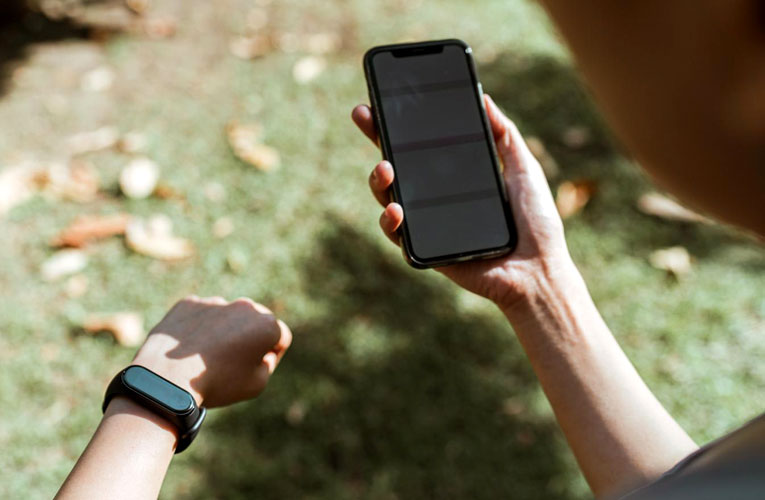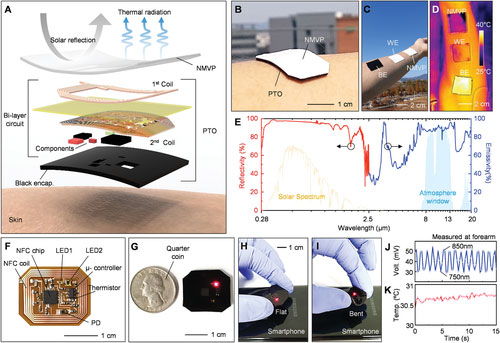
In a new approach to thermal protection in outdoor wearable electronics, scientists from Korea and the US have developed an innovative solution, the radiative cooler that keeps wearable devices cool even under direct sunlight. Led by Professor Young Min Song from Gwangju Institute of Science and Technology (GIST), Korea, the team produced a nano-/micro-voids polymer (NMVP), a flexible and nonmetallic cooler made from two perforated polymers: polymethylmethacrylate and styrene-ethylene-butylene-styrene.
The radiative cooler has almost 100% reflectivity in the solar spectrum, which means it can reflect nearly all sunlight. Besides, it has high emissivity in the range of frequencies known as the atmospheric window enabling the material to easily radiate excess heat into the atmosphere, which helps cool it down. Moreover, the solution has excellent mechanical properties of the new polymer that make it all the more suitable for outdoor wearable devices.
For testing the effectiveness of their innovation, the scientists built a patch-type tissue oximeter equipped with an NMVP-based cooler and the wearable biosensor could externally measure the concentration of oxygen in the blood far more accurately than conventional oximeters while also maintaining a much lower temperature.

As put in by Professor Young Min Song, “Our approach is the first demonstration of successful thermal management in wearable devices considering both internal and external heat sources without blocking wireless communications. Adding further he said, “Our flexible strategy for radiative cooling will help bring about thermally protected skin-like electronics, which in turn will make human body monitoring unobtrusive and imperceptible.”
The promising results of this study could pave the way for the widespread adoption of wearable devices and biosensors, which will become powerful tools in health monitoring and the training of athletes. The study has been published in Advanced Science.

